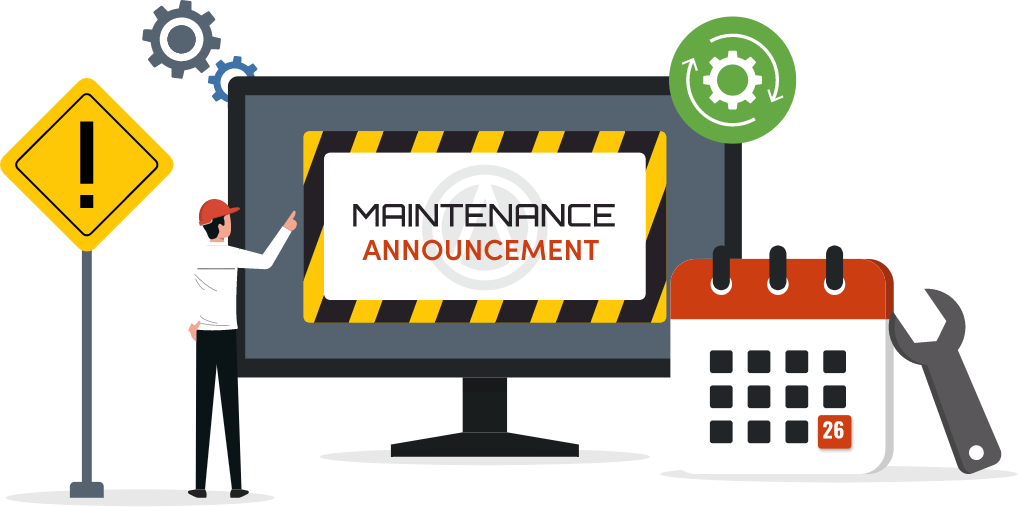What is an accounts payable automation software?
Accounts payable automation software streamlines the invoice and payment process by automatically capturing, verifying, approving, and paying bills. It reduces manual errors, saves time, improves accuracy, enhances financial control, and boosts efficiency in managing vendor payments.
Restaurant Billing 101 - Simplify Your Finances and Boost Efficiency
Importance of Efficient Financial Workflows
Running a restaurant means juggling many tasks every day, and handling money is one of the most important. Billing customers correctly and paying suppliers on time helps keep the business running smoothly. But doing all this by hand can be slow and full of mistakes. In fact, studies show that manual invoice processing can cost businesses up to 10 times more than automated methods. Mistakes like missed payments or wrong amounts can hurt relationships with vendors and cause cash flow problems.
That's why more restaurants are turning to billing and accounts payable automation. These tools help by automatically handling invoices and payments, making the whole process faster and more accurate. Automation saves time and lets restaurant owners and staff spend less time on paperwork and more time focusing on customers and food quality. It also helps keep track of money coming in and going out, which makes running the business easier.
Understanding Restaurant Billing

Restaurant billing is the process of creating and managing the bills that customers receive after dining. It starts when an order is placed and ends when the payment is collected and recorded. While this sounds simple, the billing process in restaurants has many parts and can get complicated, especially in busy or large restaurants.
When a customer orders food or drinks, the order goes into the restaurant's system, usually through a Point of Sale (POS) device. The POS keeps track of what was ordered and calculates the total amount owed, including taxes and any tips. Then, the bill is printed or sent digitally to the customer.
A good billing system ensures that all charges are accurate and clear. This means it handles special requests, discounts, split bills, and different payment methods like cash, cards, or mobile payments. Without a reliable billing system, mistakes can happen - for example, customers might be charged the wrong amount, or payments may not be recorded properly. These errors can slow down service and upset customers.
Billing is also important for the restaurant's internal management. The data from bills helps track sales trends, manage inventory (so the kitchen knows when to reorder ingredients), and prepare reports for taxes and accounting. For example, if a restaurant notices that a certain dish is very popular, they can adjust stock and staffing to meet demand.
Many restaurants still rely on manual or semi-manual billing processes, but these can be time-consuming and prone to errors. Studies show that restaurants using automated billing and POS systems reduce billing errors by up to 50% and speed up customer checkout times significantly. Automation also helps with keeping all the data in one place, making it easier to review and analyze later.
Restaurant Billing Systems
A restaurant billing system is a tool that helps manage the entire billing process, making it faster and more accurate. Here are the main parts of how these systems work and why they matter-
1. Point of Sale (POS) Integration - Most restaurants use a POS system as their billing tool. Servers enter orders into the POS, which automatically calculates prices, taxes, and tips. The POS then generates the customer's bill when it's time to pay. It can also connect with the kitchen and inventory systems, keeping everything coordinated.
2. Error Reduction - Billing systems reduce human mistakes. Manual billing can lead to errors like wrong prices or missing items. Automated systems do all the math correctly and can easily handle tricky situations like splitting bills or applying discounts.
3. Time Savings - Using a billing system speeds up the checkout process. Customers don't have to wait as long for their bills, which improves their experience. For example, restaurants with integrated billing systems can cut customer wait times by up to 30%.
4. Data and Insights - Billing systems record every transaction in detail. This information helps restaurant owners see what items are popular, track busy times, and monitor daily income. This data is useful for planning inventory, staffing, and sales strategies.
5. Flexible Payment Options - Modern billing systems support many payment methods such as cash, credit cards, mobile wallets, and contactless payments. Offering multiple ways to pay makes it easier and more convenient for customers.
Restaurant billing systems simplify billing, reduce errors, speed up service, and provide valuable business data. They are essential tools to help restaurants run smoothly and grow.
Accounts Payable in Restaurants
Accounts payable (AP) is the process restaurants use to manage the money they owe to suppliers and vendors. This includes paying for food, beverages, equipment, utilities, and other services needed to keep the restaurant running smoothly. Managing AP well is important because it affects the restaurant's cash flow and relationships with suppliers.
The typical AP process involves several steps
1. Receiving Invoices - When a restaurant gets goods or services from a vendor, the vendor sends an invoice - a bill detailing what was supplied and the amount due. Restaurants need to collect these invoices to know what payments are owed.
2. Verifying Invoices - After receiving an invoice, the restaurant must check that the items listed match what was ordered and received. This prevents paying for wrong or missing items. For example, if a delivery is short on supplies, the invoice should reflect that.
3. Approving Invoices - Once verified, invoices are sent for approval. This step ensures that the payment is authorized by someone responsible, such as the manager or finance team. Approval helps prevent fraud and keeps spending under control.
4. Making Payments - After approval, payments are made on time according to the agreed terms with vendors. Paying bills late can lead to fees or damaged supplier relationships, while paying too early can hurt cash flow.
5. Keeping Records - Finally, the restaurant records all payments for accounting and tax purposes. Good record-keeping helps track expenses and prepare accurate financial reports.
Many restaurants handle these steps manually, which can be slow and prone to errors. Common problems include lost invoices, duplicate payments, or missed deadlines. These issues can cause extra costs and stress.
That's why accounts payable automation is becoming popular in the restaurant world. Automation software can scan invoices, match them with orders, route them for approval, and schedule payments automatically. This reduces mistakes and saves time, allowing staff to focus on running the restaurant.
Vendor Billing Management

Managing vendor billing is an important part of running a restaurant smoothly. Vendors supply the food, drinks, equipment, and other essentials that keep the kitchen and dining room running. Ensuring that vendor bills are handled properly helps maintain good relationships and prevents disruptions to your operations.
Here's how vendor billing usually works
1. Invoice Issuance - Vendors send invoices to the restaurant after delivering goods or services. These invoices detail what was provided, the quantity, price, and total amount due. It's important to receive these invoices promptly so payments can be processed on time.
2. Delivery Confirmation - Before paying a bill, the restaurant needs to confirm that the order was received and matches what's on the invoice. This step helps avoid paying for items that were not delivered or were damaged. Keeping delivery receipts and comparing them with invoices makes this easier.
3. Dispute Resolution - Sometimes, there might be mistakes on the invoice or issues with the delivery. For example, the quantity might be wrong, or some items could be damaged. In these cases, the restaurant needs to contact the vendor to resolve the problem. Clear communication helps prevent confusion and keeps both sides happy.
4. Payment Agreement - Restaurants and vendors usually agree on payment terms, such as paying within 30 days of receiving the invoice. Following these terms is important to maintain trust and a good working relationship. Late payments can lead to penalties or delays in future deliveries.
5. Record-keeping - Keeping good records of all vendor invoices and payments is essential for managing the restaurant's finances. It also helps during tax time and when reviewing expenses to find ways to save money.
Managing vendor billing well can be a challenge, especially for busy restaurants dealing with many suppliers. Automating this process can reduce errors and make payments faster and easier. Automation tools can help track invoices, remind staff about due payments, and keep records organized.
Franchise Billing Considerations
When a restaurant is part of a franchise, billing becomes a bit more complex. Franchise billing involves handling payments not only between the restaurant and its vendors but also between individual franchise locations and the franchiser (the main company). Because franchises operate under a common brand, it's important to have clear and consistent billing processes to keep everything running smoothly.
Here are some key points to understand about franchise billing
1. Centralization of Billing - In many franchises, billing is centralized through the franchiser's system. This means the franchiser may handle payments for multiple locations or require franchisees to submit invoices to a central office. Centralization helps maintain consistency in billing practices, making sure all franchisees follow the same rules and timelines.
2. Standardization of Processes - Franchises often have strict guidelines about how billing and payments should be handled. This includes using specific software systems, templates, or approval workflows. Standardization ensures that invoices are processed uniformly, which simplifies accounting and reporting for both the franchisee and franchiser.
3. Royalty and Fee Billing - In addition to regular vendor bills, franchisees typically pay royalties and other fees to the franchiser. These payments are usually calculated as a percentage of sales or a fixed amount. Accurate billing and payment of these fees are essential to maintain franchise rights and avoid penalties.
4. Managing Multiple Locations - For franchisers managing many restaurant locations, tracking billing across all units can be challenging. Automated billing systems that integrate all locations into one platform help provide visibility and control, making it easier to manage cash flow and compliance.
5. Communication and Support - Good communication between franchisees and the franchiser is vital to resolve any billing issues quickly. Support from the franchiser in managing billing questions or problems can save time and prevent misunderstandings.
Franchise billing requires clear rules, centralized control, and reliable systems to keep all parts of the business aligned. Automation and software tools designed for franchises can greatly simplify this process and help both franchisees and franchisers stay organized and compliant.
Benefits of AP Automation
Accounts payable (AP) automation brings many advantages to restaurants by making the process of paying bills faster, easier, and more accurate. Instead of handling invoices and payments by hand, automation uses software to take care of these tasks. This helps reduce mistakes and saves a lot of time for busy restaurant teams.
Here are some key benefits of AP automation
1. Saves Time and Effort - Manually entering invoice details, matching them with orders, and approving payments can be very time-consuming. AP automation speeds up these steps by automatically capturing invoice data, verifying it, and routing it to the right person for approval. This means staff spend less time on paperwork and more time focusing on running the restaurant.
2. Reduces Errors - Manual processing is prone to errors such as entering wrong amounts, paying duplicate invoices, or missing payment deadlines. Automation minimizes these mistakes by checking invoices against purchase orders and delivery records. This ensures the right payments are made on time and prevents costly errors.
3. Improves Cash Flow Management - AP automation gives restaurants better control over when bills are paid. The software can schedule payments based on due dates and cash availability, helping avoid late fees or missed discounts. With clear visibility of outstanding bills, restaurants can plan their cash flow more effectively.
4. Enhances Vendor Relationships - Paying suppliers on time builds trust and strong partnerships. AP automation helps ensure invoices are processed quickly and payments are made promptly, which can lead to better terms and service from vendors.
5. Provides Better Financial Insights - Automated systems keep all invoice and payment data organized and easy to access. This allows restaurant owners and managers to track expenses, analyze spending patterns, and make smarter budgeting decisions.
6. Supports Business Growth - As restaurants grow, manually managing accounts payable becomes more complicated. Automation scales easily, handling more invoices without adding extra work. This helps restaurants grow without worrying about billing problems.
AP automation helps restaurants save time, reduce errors, control cash flow, improve vendor relationships, and support growth - all key factors for running a successful business.
Selecting the Right AP Automation Software
Choosing the right accounts payable (AP) automation software is an important step for any restaurant looking to improve its billing and payment process. The right tool can save time, reduce errors, and give better control over finances. But with many options available, it's important to know what features to look for.
Here are some key things to consider when selecting AP automation software for your restaurant -
1. Invoice Scanning and Data Capture - The software should be able to scan invoices - whether they come as paper documents, PDFs, or emails - and automatically extract important details like vendor name, invoice number, date, and amount. This reduces the need for manual data entry and speeds up the whole process.
2. Workflow Automation - Look for software that can route invoices automatically to the right person for approval based on your restaurant's internal rules. This helps keep the process moving quickly and makes sure no invoice gets stuck or forgotten.
3. Payment Scheduling and Processing - The system should support scheduling payments to vendors according to their due dates. It should also integrate with your bank or payment platforms to make the payment process seamless and secure.
4. Integration with Existing Systems - Your AP automation software should work well with other tools your restaurant uses, like your accounting software, POS system, or inventory management. Integration helps keep data consistent and avoids double entry.
5. Fraud Prevention and Security - Good AP software has built-in checks to spot duplicate invoices, suspicious activity, or errors before payments are made. It should also protect sensitive financial information with strong security measures.
6. User-Friendly Interface - Choose software that is easy to use for your staff. If the system is complicated, it can slow down adoption and create confusion.
7. Scalability - Select a solution that can grow with your restaurant, whether you have one location or many. It should handle more invoices and users as your business expands.
By considering these factors, restaurants can find AP automation software that fits their needs and helps streamline their billing process, saving time and reducing stress.
Summary
Efficient billing and accounts payable management are essential for running a successful restaurant. Manual processes can slow down operations, lead to costly errors, and strain vendor relationships. By embracing automation, restaurants can save time, reduce mistakes, improve cash flow, and gain valuable insights into their financial health. Whether managing customer bills, vendor invoices, or franchise fees, automation streamlines these tasks, allowing restaurant owners and staff to focus more on what matters most - delivering great food and excellent service.
Implementing accounts payable automation may seem challenging at first, but with careful planning and the right tools, it becomes a powerful asset that grows with your business. Restaurants that adopt automation position themselves for smoother operations, better financial control, and long-term success.
If you're ready to simplify your restaurant's accounting and billing processes, consider Altametrics. Their comprehensive restaurant accounting solution offers powerful AP automation features designed specifically for the unique needs of food-service businesses. With Altametrics, you can easily track invoices, automate payments, and gain real-time visibility into your restaurant's financial health - all from one user-friendly platform.









































































































































































































































































